#i know some VNs do this but at least the ones i engaged with tend to treat being single as the 'bad ending' which
Text
To elaborate a bit on the tags of the last reblog, I wish games with romance options (not talking about games like romance VNs, where the whole point of the game is dating someone) treated remaining single as a route, instead of a "the result of choosing not to engage with the romance aspect of the game"
For example, in games like story of seasons or rune factory, where romance is an optional aspect of the game you can interact with but are not forced to (excluding stuff like RF3 and A Wonderful Life, where you're forced to marry someone to progress), you Can chose to remain single, but in doing so you're missing on stuff like character related events, side stories related to dating people, a lot of character insight that comes from dating them, all of that stuff, and you don't really get anything else in return
So as a follow up to that, if you chose to remain single and not engage romantically with any characters, instead being friends, or in some more extreme cases, unable to get close to a character at all because them opening up to you is tied up to the option of dating them, you get to see new facets of these characters, like you becoming closer platonic friends, or an eventual falling off with a character who has a one sided crush on you because they can't handle being your friend without having said crush being reciprocated, getting to see what would happen to a character who gets character development during your relationship or relies on your love for them for emotional support now that they don't have that to help them
You know, have the choice to remain single one with consequences instead of a mere "option not to engage with our game's romance system"
#i know some VNs do this but at least the ones i engaged with tend to treat being single as the 'bad ending' which#less than ideal#also i tied this to being ace on the prev reblog tags#and while yeah having explicitly ace/aro options in more games would be nice#i don't mean this as exclusively an ace option#it can be a route like i mentioned or even a cool what if scenario to see what would happen to the cast of the game if#you didn't engage with them romantically but wasn't romoved from the plot either
8 notes
·
View notes
Text
Probably my last write up post about thoughts on Sweet Enchantments.
Tl;dr: Sweet Enchantments as a whole is a reasonable series as far as worldbuilding. Reasonable enough to where I believe I’ll enjoy it with a love interest I really like, but not good enough to read through routes that I’m lukewarm about. Runa, as a love interest, I get it. I get why people like her. I just can’t get on board, especially with some of the revelations of the new update. I may be overreacting, but I have personal reasons I can’t back some of Runa’s behavior.
Now that we’ve gotten the full picture of the pilot season, I feel that I can somewhat accurately judge how I personally feel about the series as a whole. And while Runa will likely have a lot of story and character growth to come, I can also say with relative confidence about how I feel about the character as well.
Keep in mind they’re just my opinions on everything and, as with everything in Lovestruck, people have vast and differing opinions. This is just a wrap up to a post series I started and want to finish.
As far as Sweet Enchantments as a whole is concerned, I’ve made my opinions quite clear I believe over the last month. I think the whole magic system (different types and “schools” or disciplines as it were) and the fact the cafe is a work program of sorts for magical criminals is cool and I like both of those things. The cafe AU thing, however, is not exactly something I would read just for the hell of it. Hence why I think I would continue the series, with a different love interest that I’m more interested in than Runa or Lucian. Zain and Liora are the two I’m waiting for and hoping are more my speed.
And speaking of Runa....
I’ve never been particularly warm towards her. I acknowledge my bias here and now. I personally don’t think an enemies to (physical) lovers trope was a good choice for a pilot (or at least having both premiere routes be of this trope, I think Sweet Enchantments perhaps would have been less polarizing if there had been one enemies to lovers and one, potentially, friends to lovers or something similar. I feel that might have made it more palatable for some, myself included). Mainly because it’s such a polarizing trope. Especially if it’s written poorly (not saying that either Lucian or Runa are, because that’s largely up to interpretation at this point). I typically love enemies to lovers, though I tend to like them in more established media. Azula/Katara (ATLA), Narcissa/Hermione (HP), Shego/Kim (KP) are just a small handful of ships I really love. Runa and MC didn’t have as much development independent of their enemies to lovers storyline so I believe that’s why I didn’t warm up to the idea as much. Though of course, this is no one’s fault. It’s just the way it is in otome games. The story does revolve around the relationship. Perhaps the route based on this was doomed for me from the start. There’s really not been a route I’ve played through that had an enemies to lovers trope like this one. Even the ones that I draw similarities from such as Lorelei or Antares weren’t the same as this.
The hot/cold “I can’t control myself” attitude of Runa really gets me. Granted MC keeps inviting that behavior because she has a thing for Runa, but even in book 10, she’s getting to the point where she knows she wants something from Runa, but it’s getting frustrating and exhausting to deal with that. Runa has some good reasons for wanting to keep her distance, not least of all relationships between humans and magicians seems basically illegal and she’s already a criminal. Again, I get it’s an otome game, but if I was in MC’s shoes, I would have dropped someone with that attitude 2 weeks ago. Likely my personal opinion on this is one of the reasons I don’t care for Runa.
Before you start off this section, please read the entire thing before thinking I’m overreacting. I’m pretty harsh on Runa here, but I have personal reasons for that.
Then we get to the Kamila thing... I have some very strict lines in the sand, so to speak, about consent. And I have a huge problem with what Runa apparently did to Kamila (and by extension what Kamila did to MC). Love potions and spells (or other such magic/powers that use deception to change an individual’s mind in regards to romance, especially when the physical manifestation is involved) in media is almost always a huge no-no for me. It is vaguely gray around MC/Kamila because one, there was no sexual activity between the two and it’s doubtful Kamila even intended for that to happen, and two, it was more about revenge than any real feelings, but even so, I was somewhat uncomfortable around that.
And as far as Runa/Kamila is concerned, that’s a big no-no for me. I think it’s pretty strongly implied if not almost explicitly stated that Kamila and Runa did engage in sexual activities, plus Runa used her charm magic to force Kamila to actually have feelings for her. And in fact, Runa just tossed her aside, I guess, when she got bored of her. I don’t know if that is what landed Runa in the cafe in the first place, but as far as my own feelings go, I would hope it was. It does possibly point to it since the cliffhanger ending was Runa being summoned for violating her sentence and it would have had to have been something she had done in the route thus far. And if it was using charm magic like that on other people, Kamila could have potentially framed Runa for Kamila’s spell (I don’t know what kind of magic ID exists in the storyline and if authorities could differentiate between Kamila and Runa’s magic or if Kamila could replicate Runa’s magic to where it would be possible to frame her) or perhaps Runa had some sort of relationship with a human in the past and it violating her sentence by having feelings for MC which Kamila would likely know about. Or it could be something completely unrelated. We obviously don’t know for sure.
I know there was that theory going around the fandom and even explicitly stated in the route, of Runa charming MC. And even back then I was highly uncomfortable with that idea and prayed that wasn’t the case. We still don’t know with absolute certainty, though based on Kamila’s use of magic on MC as well as Runa’s reaction to MC saying she really likes Runa, I’m very confident that Runa didn’t do anything to MC’s feelings, at least with magic.
All that said, I’m glad she has recognized (apparently) that her actions were completely inappropriate. Many times in these storylines, the one doing the mind control, so to speak, never learn that lesson or at least never acknowledge that they as an individual were in the wrong. They’ll say they had good reasons or good intentions or whatnot. Runa flat out did say she was wrong and that she never considered how Kamila felt and that admission seemed rather genuine. It’s unfortunate to me that she had to be presented with a parallel involving someone she loves for her to realize this, but better late than never? If this was a common thing in their world, I might be inclined to believe she didn’t know better but it seems to me like, and might have even been said at the beginning, I forget, that using magic in this way is very inappropriate and someone like Runa would most certainly know that.
I would desperately like to interpret this plot point in a different way and perhaps it reads differently to someone else, but that’s basically how it read to me and I really was uncomfortable with that whole plot point. I get that a lot of people don’t see a problem with this use of magic or superpowers. But I’ve been around the block a few times in media (Season 5 of Lost Girl springs directly to mind) as well as having my own personal experiences as far as consent is concerned, and I am a little sensitive with it.
Now that I’ve addressed that, Runa is an interesting character. I don’t deny that. She has a lot of potential and I get why people love her. I really do. In an alternate universe, I might as well. But for the reasons I’ve summed up above and over the last few weeks, Runa isn’t a storyline I’m going to continue. I’m all in for Zain and Liora, but until then, Sweet Enchantments is going to take a backburner to other routes I’m playing as they’re updated. And praying that when VN comes back this month, it comes back with Zeke and Juliette routes.
32 notes
·
View notes
Note
As someone who hasn't, wouldn't, and won't be experiencing Major/Minor (or whatever it was called) could you perhaps analyze more specifically some of the things you felt were missteps more in depth, so others who decide they might want to make a visual novel or even just a story, might be able to avoid the same issues? I realize this might not be your area of interest, but I'm always interested in these kinds of analyses.
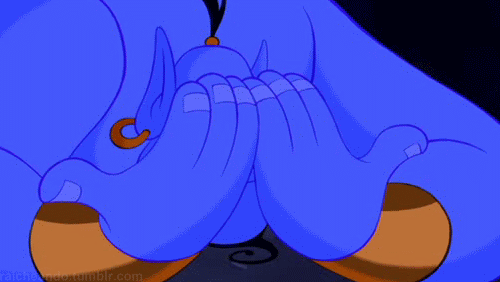
Man, where do I even begin.
I suppose I should start by saying that this game could have been fine; I don’t necessarily hate this game for the story, even if I think it’s uninspired. I play lots of point-and-click games and usually enjoy them (even the stupid ones) so long as they have merit in one area or another. But that’s the core of the problems with Major/Minor: It has NO merit to work with. Its construction shows absolutely no understanding of this genre of game design. Or of writing. Or of entertainment in general. Or of simply respecting one’s audience.
First and foremost, let’s discuss visual novels.
The critical difference between a novel and a visual novel is interactivity; a novel is a set and done deal that takes its readers along for the ride, whereas a visual novel invites the readers to be part of the ride itself. The direction of the story is influenced by the player, and this allows them to personally take ownership of later events. It’s the sort of game that tries to put you in the role of the protagonist in the most direct form possible. Like other first-person games your view as a player is exactly that of the character you’re playing, but in a VN’s case it’s like reading a comic book in a choose-your-own-adventure format.
Major/Minor not only fails on both the visual and novel elements, but it also fails when combined as a visual novel.
1) Visual
For the most part, visual novels don’t have a lot of action. They primarily consist of conversations with NPCs and usually take place in static locations. For this reason, both the characters and the environments need to have a lot of personality. Players need to feel like they’re actually having conversations with the characters and that they’ve entered a unique location that sees real use. This is the red, meaty center of how VNs engage and gratify their players.
Designing characters in a visual novel is about more than giving each one a different face; it’s about giving each character enough of a range of actions and emotions to sell the idea that the character is actually interacting with you, and in a way that’s truly unique from every other character. In real life, people do all sorts of crap when speaking: Our expressions change, we gesture with our hands, our posture varies, and sometimes we even have small ticks associated with certain topics or emotions. Between these visual cues and the actual discussions themselves, players ought to know the NPCs well enough to be able to describe them like real-life friends by the end of the game.
This brings us to Major/Minor’s first serious offense: Every character has one face. Typically in a VN, each character has a minimum of half a dozen expressions, poses, and gestures/ticks to match the different emotions they’ll need to exhibit over the course of their conversation topics. The characters in Major/Minor can only make a single expression and pose throughout the entire game, which immediately leads to some seriously disjointed discussions. It’s hard for me to take a character seriously when they say they’re angry with me when the art staring through the computer screen is bright, cheerful, and apparently mid-laugh. Sorry, NPC #672, I really don’t care that you’re allegedly on the brink of tears, because your singular piece of character art is so smarmy and mischievous that I forgot you were trying to tell me something tragic.
What makes this even more annoying is that most of the characters DO have a secondary piece of art, but it’s only ever used ONE time as an introduction to a new character before the game chucks it in the bin and we never see it again. Each character COULD have had at least two expressions if the dev had planned his commissions carefully enough, buuut instead he chose to get two shots that are barely distinguishable from one another so there could be a ~=*FLOURISH*=~ when we see someone for the first time. Granted, two per character still isn’t anywhere near enough, but it’s a hell of a lot better than just one! It makes me wonder why he bothered to spend the money on a second image for each character at all, since half of these commissions only get about 10 seconds of screen time. What a waste.

And hey, speaking of wasted opportunities, let’s talk more about the environments! Lots of visual novels don’t spend much energy on their backgrounds, and although that’s usually fine (albeit not my first preference), Major/Minor seriously needed to think more about its settings. For the moment I’ll ignore the laziness of the fact that the backgrounds are generic photos with a blur filter over them; what’s more important is that this game loves to tell us all kinds of random crap about the rooms we’re in, especially during the scenes that take place in Japan. This game would’ve benefited dearly from simply having more detailed backgrounds and just letting us observe the goings on of the room on our own. Y’know, because that makes it more... visual.
Honestly, if it were me, I would’ve taken it all a step further and gone full-blown Ace Attorney on the environments. In AA games, investigating the scene is very important because you have to look for clues. I’m not saying Major/Minor needed to let you hunt for items, but I do think that it could’ve cut a ton of random information from the text by simply letting us inspect the backgrounds. That way the players that want to know what a kotatsu is can find out on their own time and players that already know or don’t care can move on.
Something else that would’ve brought the game a much-needed boost of interest is cut scenes. As noted earlier, visual novels don’t tend to have a lot of action, so when something physical DOES happen, it makes an impact. One way to maximize that flash of excitement is with a cut scene – or at least, the visual novel equivalent of one. A “cut scene” in a VN isn’t typically a full motion video like most video games boast; it still makes use of a static image, but it’s an image whose quality far surpasses that of the rest of the art in the game. Maybe it’s abnormally large and the camera slowly pans across for dramatic effect, or maybe it’s a scene drawn from an interesting angle that isn’t the player’s POV. Some games take this even farther and really do animate their cut scenes a bit (usually on par with a nice animated gif). Lots of VN cut scenes make use of sound effects or action-specific music cues to keep the player emotionally involved with the scene, as it’s a moment that’s out of the player’s control.
Major/Minor, on the other hand, does none of this. Much like the drought of facial expressions, the game simply pelts you with paragraph after paragraph to tell you about the events taking place around you, rather than simply letting you see for yourself and be, y’know, involved. Even a handful of cut scenes that had some real effort put into them would’ve really given this game some pep. Not only would it have kept me engaged as a player, but it would’ve weeded out even more unnecessary narration.
Oh, and speaking of weeding shit out of the text…
2) Novel
The writing in this game badly, badly needed to be edited. Like, so badly it makes me physically hurt from how poorly this text is constructed. I’m not talking about the simple things like misspellings and failed capitalizations, I mean BIG mistakes, like sentence fragments and improper conjugations and completely misusing some words all together. It’s also excruciatingly repetitive. Never in my life have I ever seen prose that recaps itself so frequently – sometimes literally within minutes of the event that it’s reminding you of. It even recaps itself within the same block of text a few times.
It’s pretty obvious the dev never allowed a seasoned editor to proof the text, but it’s so unbelievably bad that I’m not even sure the dev himself ever gave it a second glance. It reeks of being a first draft that was never once revisited; actually, it strongly reminds me of the sort of stories I myself wrote when I was about 13. At that time I wanted so badly to write big, dramatic stories! Stories that had deep themes and lots of intrigue! With a complicated plot and several subplots!! And lots of characters that would all totally be different and completely matter!!!! But the problem was I was so wrapped up in wanting to make my stories big, impressive epics that I stretched myself way too thin and everything came out incredibly shallow. It’s honestly kind of eerie to think back on the things I wrote as a kid while I play this game. The similarities are so striking that I can’t tell if this is something the dev wrote at that age and just never decided to polish, or if he did write it as an adult but has the writing skill-level of a teenager.
But honestly, I’d overlook all the technical flaws and melodrama this guy could throw at me if he would just show and not tell. “Show, don’t tell” is one of the oldest rules in the book when it comes to storytelling, and for good reason: Telling instead of showing is not only fucking boring, but it treats the reader like an idiot. If a writer knows what they’re doing, they shouldn’t have to tell, because they’d just demonstrate those things instead.
For example, let’s examine another huge flaw with the writing: Incredibly shallow characterizations. Early in the game the player meets a character named Rook. Rook is very rude. I know this because the game tells me. All. The. Time. I legit don’t remember how many times the game has mentioned that Rook is rude at this point. The dev seems completely oblivious to the notion that you don’t have to tell the player these things. You can just… write Rook as being rude. Trust me, my dude, I can figure out if a character is an asshole or not. Not only can Rook’s rudeness be demonstrated by how he treats me as a player, but it can be further reinforced by other characters reacting to him in a put-off manner. If you’re so concerned that I won’t pick up on the fact that Rook is a rude person just based on how he behaves, then you’re doing it wrong, end of discussion.
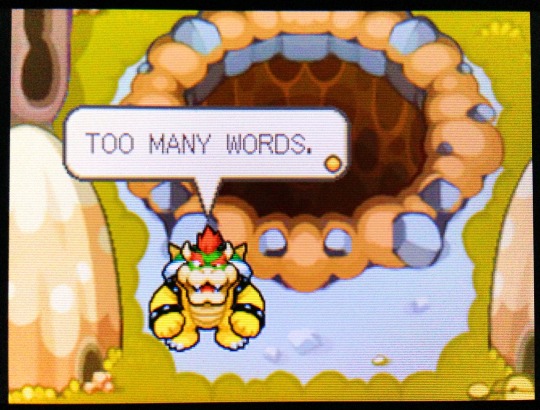
But then, as I said, the characterizations are shallow in general. Everyone tends to have their one basic trope and the story rests on the idea that you know what the character is. None of the scenes go out of their way to really dig into who someone is – which is kind of amazing, honestly, since the prose is so obsessed with making sure you know the most inane and unrelated shit half the time – and even after I’ve known a character for several chapters they still feel like a cardboard cut-out to me.
To be honest, I’m kind of impressed by the sheer volume of ways that Major/Minor fails at showing instead of telling. It tells you what characters are like instead of just letting you interact with them, it tells you about the places you visit instead of just letting you view them, it tells you every single time the characters have a mood shift or expression change because it couldn’t be bothered to give them each more than one face, and it hamfists unnecessary information into the script where it’s unneeded and interrupts the scene – and THEN, it makes SURE you notice that it’s telling instead of showing by repeating those things over and over and over again!
All of this is further exacerbated, by the way, because the dev has no idea how to tell a story in the first place. Even with all the above flaws, I miiight have still been able to enjoy this game if it was just a compelling narrative in any sense of the word at all. I will happily deal with poor construction and telling-not-showing if the story still has some intrigue. Even a flawed story can have a mind-blowing plot and keep you reading just to find out what happens next, right? I thought so too, until I realized that Major/Minor goes SO far out of its way to spoil its own plot that it frequently makes you sit through scenes that you, the protagonist, are not even present for. Yes, in a game that’s built upon being a first-person experience, the story will slam on the brakes and take you OUT of the protagonist’s shoes to make you sit by as an observer to events that probably would’ve been an great reveal later on had the dev just kept his mouth shut.
3) Visual Novel
So the visuals suck and the writing sucks, but hey, lots of games get by without investing much in those areas. Could Major/Minor pull it together and at least give the player an interesting mechanic? Hahahaha no, of course it didn’t. As far as the gameplay is concerned, Major/Minor is so bad that in many ways I hesitate to even call it a game.
The cornerstone of visual novels is making choices. They can range from serious decisions that determine the overall outcome of the game or small cosmetic details, but either way, the core of this gaming style is putting the player in the driver’s seat as often as possible. When playing Major/Minor, however, the player is strapped into a straight jacket, blindfolded, and tossed into the trunk of the damn car. This game is so reluctant to surrender control of the narrative that it’s not uncommon at all to go through entire sections of the game having made no choices whatsoever. It fails so spectacularly as a visual novel that I’d be willing to bet that the dev had never played one before. He is astonishingly disinterested in what makes a visual novel enjoyable to the player.
There’s a principle in game design called Illusion of Control. The goal of this idea is to allow the player to feel like they’re in charge of the game while actually keeping them within strict boundaries. It applies to a lot of games, but it’s especially important in visual novels. Players need to be able to dictate how the story progresses, even if some of those choices make no real impact on outcomes. For example, players can enter conversation trees with NPCs that seemingly offer a lot of control – perhaps the player chooses the discussion topics, or can decide if they want to be shy or snarky in their replies – and yet at the end of the scene there could realistically be no change to the story’s progress. The greater point is that the player feels like they handled the conversation the way they wanted to. This allows them to still feel like they’ve gotten somewhere and that they accomplished something.
Major/Minor appears to scoff at the very idea of this, like the game’s worried you’ll cramp its style if it gives you too much power.The player is allotted no input whatsoever on how the PC treats the other characters, what subjects to discuss, where they’d like to go, how to react to the actions of other characters… It’s truly mind-blowing just how consistently the game misses opportunities to allow the player even the illusion of control. For example, there’s a scene where the player character (PC) is awakened in the middle of the night by a pounding on the door, and no options are offered on how the player would like to handle this. A better game might allow the player to choose if they want to pretend to keep sleeping, or call out to whomever is knocking, or try escaping out a window, or crack the door open to see what the person wants. Even if it’s an absolute necessity to the plot that this person enters the room, it’s still better to let the player choose, because there are a plethora of ways to redirect each of those options back around toward the character getting in.
Unfortunately, Major/Minor is just too damn lazy to be bothered with gameplay, and the PC just lets the stranger in with no input from the player. Soon after, the stranger attacks the PC, which would again be a prime opportunity for lots of reactionary options: The player could duck! Or the player could punch their assailant! Or maybe they could kick instead! Maybe they’d try to run away or call for help! Buuut no, Major/Minor really doesn’t care what you want YOUR CHARACTER to do, and it’s already decided that you’re going to put up no fight at all and immediately pass out. It’s by far one of the most unsatisfying things I’ve ever experienced in a video game.

The disconnect between the player and the protagonist is so extreme that I honestly don’t feel it’s a fair assessment to refer to the protagonist as the “player character.” It’s not uncommon for visual novel protagonists to speak in the first person, but in most games it feels like the PC is speaking on your behalf because they’re acting according to your will. The protagonist of Major/Minor decides so many things for themself that it stopped feeling like “my” character a very, very long time ago. This character isn’t me and never was; it’s the main character of a book that I didn’t ask to read, who very occasionally pauses to ask my opinion on something.
HEY HOWDY HEY SPEAKING OF PAUSING… If you boot this “game” up for a session, you’d better hope you have plenty of time on your hands to get through it, because you’re at the dev’s mercy for when you can save your progress. Being able to save anytime you want is a staple of visual novels because 1) people read at wildly different paces, and 2) for many people, excessive reading makes them tired. Not only that, but sometimes life just plain gets in the way and you have to pick up and go on short notice. Major/Minor ignores all of these factors and leaves the player relegated to appointed checkpoints throughout the game.
Now, I’m not necessarily saying that checkpoints are inherently bad, but they do need to be used very, very wisely. Any game (VN or otherwise) that doesn’t allow the player to save anytime they want needs to be sure checkpoints are reasonably close from any given location, and furthermore that they’re spaced at regular intervals. As I’m sure you’ve guessed by now, however, the dev flushed that idea down the toilet along with what was left of his common sense and parents’ love. Sometimes Major/Minor stacks save points practically back-to-back within the span of a few minutes, and in other cases I’ve literally played for over and hour before the game finally rewarded me with the option to save.

There’s no discernible pattern or technique that I can detect for when save points are bestowed on the player; you’re not even guaranteed an opportunity to save when the game switches chapters! I would say that I can’t fathom why the dev thought this would be a good idea, but let’s not kid ourselves here, it’s clear that the dev never thought this through in the first place. If he had, he might’ve noticed that players being uncertain about whether or not they’ll be able to save their progress discourages them from playing at all.
Also, before I fully move on from the game design, I just wanted to make a brief side note about the music. To be honest, I turned the music off a VERY long time ago, so I don’t even remember what it sounds like; however, I’ve read that all of the music in the game is from the free assets you get in RPG Maker. I’ve further read that the free assets (both audio and visual) were the entire reason the dev decided to use RPG Maker for this game in the first place, in spite of the fact that there are other programs out there specifically geared toward making visual novels. This is worth mentioning because it further highlights just how lazy this entire game is. It’s not a sin to use free program assets – that IS what they’re there for, after all – but when you ONLY use the free assets and then advertise your game on Steam for being sooo creative and original, AND have the gall to charge $20 for it?? Yeah, that’s a gigantic slap in the face.
Speaking of Steam, you’d think a game like this would’ve been weeded out by the gaming community for being the garbage that it is, right? After all, there’s a ranking right at the top of the page showing the proportion of good and bad reviews it’s gotten, and right now it says the feedback is “very positive.” I will say that I do take community feedback into consideration when I’m thinking about a game that I haven’t otherwise heard of before, and my misstep with this game has definitely taught me a valuable lesson. When I saw that the game is ranked “very positive” and I scrolled down to see several glowing reviews, I felt that was sufficient enough research to know if the game was worth my time and money.
However, upon trying out the game and realizing just how badly I’d been deceived, I did a little more digging. As it turns out, the dev is known for flagging negative reviews as “abusive” and getting them deleted, allowing him to effectively filter out the bad press so long as he can make some kind of a case to Steam. This debacle has taught me that it’s not enough to scroll to the bottom of a Steam page for user reviews, as those tend to be the most recent; what you do instead is click the “Read all [x] reviews” link, as those reviews are sorted by popularity. THIS is where you’ll find the reviews that the community has deemed the most helpful and informative, and in this case, it’s like night and day. ALL of the highest-ranked reviews of Major/Minor are negative, and the numbers are staggering. Literally HUNDREDS of people have ranked these terrible reviews as helpful, and most of them are in the 80-90% range on agreement. You have to load more reviews four times to find even one single positive post, and once you do start getting into the positives, the upvotes are significantly fewer.
SO, in conclusion...
I want to say that’s about all I have to give on this subject, but the sad truth is it’s not. I could probably critique this game line-by-line, moment-by-moment, if I really wanted to. Fortunately for my sanity, I really don’t want to. … Not right now, anyway. I’m sure I’ll lose it at some point and decide to go through and count all the missed opportunities in the game or something, but I won’t be doing that right now, thankfully.
So in the vein of others learning from the mistakes of this game: If you were thinking about buying Major/Minor, don’t. If you bought it a while ago during a sale and were thinking about starting to play it, don’t. If you’re interested in making a visual novel and wanted to learn from this game’s mistakes… Well granted there’s a lot to learn about what not to do, but still, don’t give this lazy, deceptive dev any more money. Learn from this guy’s shortcomings based on the feedback of players. Hell, read or watch a Let’s Play if you really want to experience it first-hand. Just please don’t buy and play this game. As a favor to ME, please don’t buy and play this game.
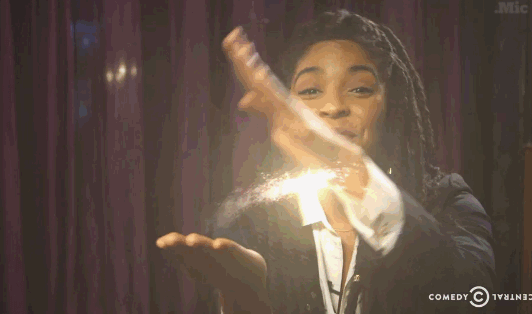
| First| Next >>
#sciver#Sallymun plays Major/Minor#I hope you guys enjoy this because it was not easy#if you know someone who's thinking about this game please show them this post#REBLOG TO SAVE A LIFE
39 notes
·
View notes
Text
Hair Tropes in Japanese Media
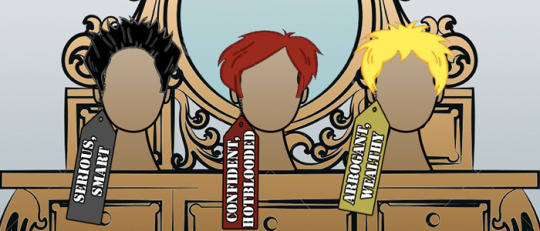
Once you’ve read a few visual novels or seen a few anime, it can feel like you’re able to judge a new character from just their appearance. You see twin-tails on a girl and you know she’ll be a tsundere, or they wear their hair in a tight bun and you know they’ll have a strict attitude. But is it really true, or are we just suffering from confirmation bias? Are we only remembering the instances where our predictions were correct? I decided to find out by analysing the character data on VNDB to see what character traits tend to pop up more frequently with certain hairstyles. This post will only analyse male characters, with female characters being counted next time.
Source data
I downloaded the character tags for every VN on VNDB with at least 5 votes, collecting data on 48772 characters in total. I filtered out any non-male characters, leaving 14878 characters. After merging any duplicates (where the same character appears in multiple VNs), I was left with 12289 characters to analyse.
For each hairstyle, I compared how often tags in the categories “clothes,” “personality,” “role,” and “engages in” came up compared with the average. The 5 tags in each category with the biggest increase (compared with the average) could be considered those most closely linked to that hairstyle and are listed in the results below.
Keep in mind that these results aren’t definitive. Even with 12k characters, there are some hairstyles and traits that are fairly rare, so just a few random occurrences can boost their stats considerably and cause some spurious results. This analysis is meant more for fun than as proof of any trope. These results only cover VNs, although with the large number of adaptations both to and from anime and manga, the results should still be applicable to drawn Japanese media as a whole.
The meaning of some of the traits can be a little unclear. You can look up the exact definition used on VNDB using their search field here, and a summary of less well-known terms is here.

While brown hair seems to be the mark of the typical “ordinary student living an ordinary life” VN staple, their black haired compatriots seem to take on more serious roles that the protagonist looks up to.
Blond guys seem to linked loosely to posh brats.
The allure of white haired guys comes through in their traits: the refined outfits and the aloof attitude which can seem so attractive.
Red headed guys tend to be as fiery as their hair colour, being so hot-blooded.
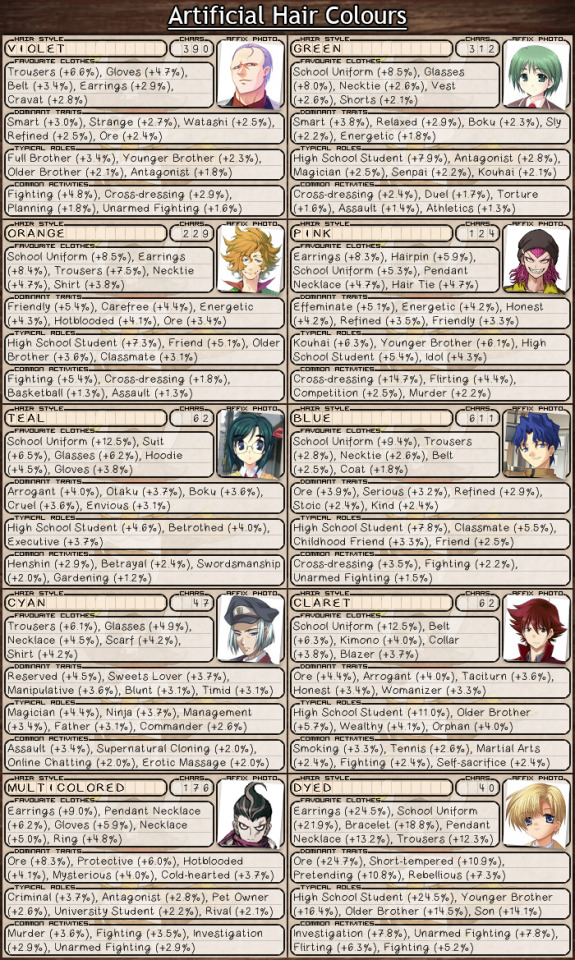
Pink isn’t just a fantastic colour, it’s also a mark of a fantastic character with it being the biggest sign that a character cross-dresses~
It seems the most dangerous people to have around are those with multicoloured hair, getting involved in murder and criminal activities. Perhaps those raving about the terrors of dyed hair “SJWs” were right, but only in the world of 2D.
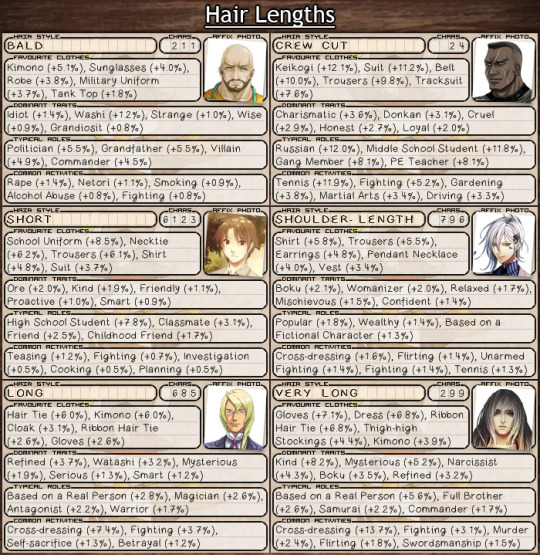
So it seems those getting on in years and losing their hair aren’t just wise, but also idiots? Are we sure they’re idiots or are we just too idiotic to understand their wisdom?
It seems the longer a character’s hair, the more confident they become. They transition through from being a popular womanizer at shoulder-length, to being mysterious narcissists at “very long” hair.
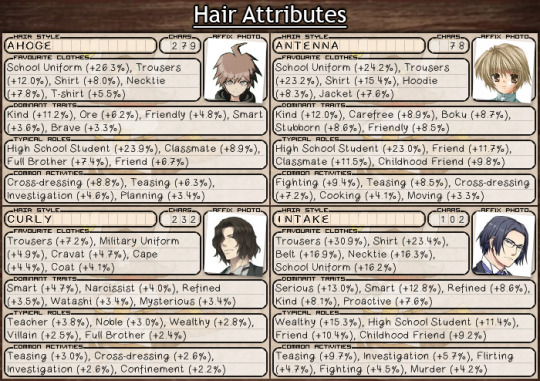
Those tufts of hair known as ahoges and antennas are almost like a third arm waving hello, marking the owner as a kind and friendly individual.
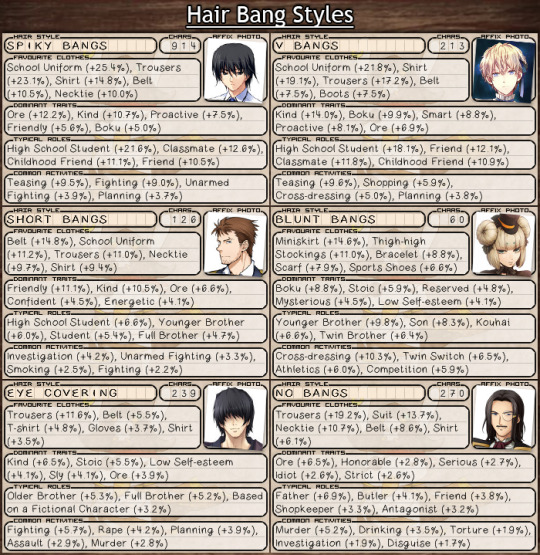
Bang guys just want to have fun. They seem much kinder and active than those without. No bang, no life.

Straight hair seems to be more the mark of a sibling, while spiky characters are more adventurous and fun.
Slicked back hair seems to be a style for an older generation, kept mainly for characters with adult roles.
Parted to one side seems to be for those who care for a more formal appearance, being closely linked to neckties.

Almost any kind of facial hair seems to be linked to the character taking on a more parental role, probably due to so many protagonists being school-age and unable to grow facial hair of their own.
As you might expect, those with stubble live a more relaxed and carefree life, or else they’ve been working so hard as to not have had the chance to shave.
Thick eyebrows are well-used by their wearers, all the better to look on disapprovingly with the strict attitudes.

Ponytails mostly seem to be linked to honourable warrior archetypes.
Side hair seems to be unusually closely linked to being an orphan, have they not been taught an easier way to keep their hair out of their eyes?
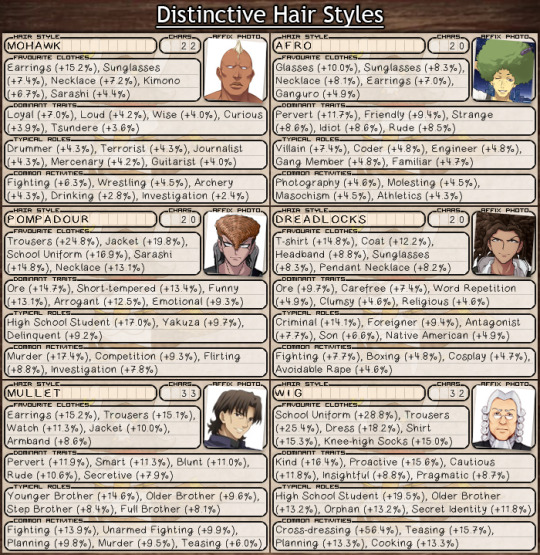
Sunglasses seem to be a consistent theme among many of the more fancy hair styles, popping up with mohawks, afros, and dreadlocks.
I hope you had fun looking over results. I don’t think there’s anything too surprising in them, but it’s fun to look for any stereotypes you might have had about a hair style. My next post will be doing the same analysis on female characters, followed by the analysis on yandere traits that I teased about last post.
Thanks again to Part-time Storier, /u/8cccc9, and /u/tauros113 for their help in analysing and presenting this data. I love discussing this stuff, so if you’d like to get in touch and chat, you can contact me here on tumblr, reddit, or twitter.
31 notes
·
View notes
Text
Visual Novel Protagonists [Part 2]

What does a protagonist tell you about a VN? Does your hairstyle determine the type of heroine you'll meet? Does your age determine the type of sexual acts you engage in? Using some maths on the tag data on VNDB I aim to find out, and see out what kind of trends we can find with VN protagonists.
Source data
Part 1 of my VN protagonist analysis, where I examined what types of protagonists are most common, is up here.
I downloaded the tag data for every VN on VNDB with at least 5 user ratings, totalling 7,690 VNs and 220,222 tags. I then looked at the tags related to protagonists, filtering out those that appeared in fewer than 40 VNs (as the less common a tag is, the more likely any trends found are just a co-incidence); that left 82 protagonist tags. I’ll present the more interesting ones here in this post and the rest can be found here.
To identify trends, I looked at those VNs with a specific protagonist tag, then compared how common their other tags were against the average. Those with the highest increase in frequency were those we could say are most closely tied to that type of protagonist. For example, VNs with the “female protagonist” tag were much more likely to have the “otome game” tag, as shown in the chart below from my last post (the increase over the average is in green).

It isn’t a particularly surprising or interesting result that “otome games” would be linked to “female protagonists, but it confirms the algorithm works.
Now, onto the results! There’s a lot to go through so I tried to group it into a few categories. I’ll just be adding a few comments on any aspects I thought were particularly interesting. I hope you enjoy reading it as much as I did making it~

The bracketed number next to each protagonist title is how many VNs had that tag. The green percentage next to each entry is the increase in the tag frequency compared with the average.
The common thread in the unnamed protagonist tags seems to be short, low-budget VNs (hence the lack of choices and photo backgrounds), where there isn’t necessarily much of a story so the protagonist never needs a name.
The homosexual protagonist tag isn’t restricted by gender, and yet the results are dominated by yuri tags. This must reflect how much more popular yuri content is to yaoi. I was a little surprised it was so unbalanced, but then the main market for VNs in Japan are heterosexual Japanese males, who tend to like both hetero and lesbian content.
As someone transgender, it was a little disappointing that “trap” protagonists are treated primarily as fetish fuel (hence the all-girls school setting) or as humorous (the comedy tag). While “trap” isn’t synonymous with transgender, it’s still nice to see how common it is given that visibility is the first step to acceptance.
It’s interesting that nameable protagonists are more associated with content catered towards a female audience, while faceless and voiceless protagonists are more linked with male protagonists (and their male audience). It would seem to suggest that women self-insert more through the text, while men insert through visuals. This would fit with academic research on erotica, with men tending towards visual stimuli, and women more towards written erotica.
For the protagonist selection tag, the increase in the increase of Shounen Ai and Shoujo Ai content is perhaps due to those VNs offering the same romanceable cast for either selection, therefore resulting in more same-sex options.

Translation for the non-weeaboos: “Kyonyuu” is a woman with a large chest, and “Netori” is where the protag seduces someone already in a relationship. Ahoge refers to a tuft of hair that won’t stay down.
The gender split in partial and full voice acting is quite pronounced, perhaps because female protag VNs are on average shorter, so less expensive to voice. It’s kind of ironic that fighting protags are so high up on the list, given their vocabulary consists primarily of grunts and screams.
As someone who wears glasses, I object to us being so closely tied to being fat and ugly. #NotAllGlasses
It’s curious that the ugly and chubby traits seem to be so closely tied with nukige (porn) content, specifically with acts that can be considered humiliating for others. Netori, urination, and public sex are all popular activities for such protags.
I find it kind of adorable that ahoge bearers are fated to be together, with heroines who have ahoges the most closely linked trait to protagonists with ahoges. Do the children of such couples then have double ahoges? However I object to them being linked to school life comedies, I can assure you from personal experience that dealing with an ahoge is no laughing matter, they’re a bitch to deal with!

Given the age of the characters, I suppose it shouldn’t be a surprise that virgin sex is so closely tied to student protagonists.
It seems almost poetic that university level protagonists are tied with multiple endings, what with university opening the door to so many options in life.
It’s cute that transfer students are linked to senpai heroines, I guess they’re the ones most in need of someone to take them under their wing. I’m not sure what the connection with super deformed CGs could be though.
Of all the unrealistic situations depicted in VNs, dimensional hopping, time travel, aliens, nothing beats how adult protagonists are portrayed. Sex, sex, and more sex? Where’s the “pays bill” or “worries about a mortgage” tags?

It seems the most noble of professions, teaching and healing, are both exploited for their fetish potential in VNs, with sexual content being so closely tied to them.
It seems appropriate that there’s only a single heroine for otaku protagonists, they know how to stay true to their one and only waifu.

Translation note: “Donkan” is someone oblivious to other’s romantic interest in them. “Hetare” is someone who has no will of their own, and constantly gets pushed around.
It’s kind of disappointing that proactive protags would waste their talents on mere romance and virgin heroines, surely they can put their energy to better use? There are worlds to save!
Nothing ever seems to go right for those suffering from mental illness. Madness, death, and suicide seem to be all that await them. It doesn’t even have any insane kinky sex to make up for it.
It’s somewhat ironic that strong female protags tend to be found more in historical settings, a time period where they’d be most oppressed by gender norms. But perhaps it’s more appealing to break gender roles in an era when they were more rigid.

It’s a shame that being in a relationship is used more as a fetish trait than a plot device. There are so many stories and relatable motivations that can be built on an existing relationship.
Perverted protagonists mostly engage in blowjobs and virgin sex? I’m disappointed. It’s like VN devs haven’t ever visited the internet.
I hope you enjoyed this little analysis. I had a lot of fun picking images for each category and wanted a few jokes, so I hope you’ll forgive a few indulgences as I picked a few anime characters here and there.
Thanks again to /u/8cccc9, Part-time Storier, /u/tauros113, and /u/Martin15Sleith for their advice and insights on analysing this data.
My next post will be delving more deeply into character traits. What activities are Western VN characters more likely to engage in? Are certain hair colours linked to murderous intent? Find out next time~
39 notes
·
View notes